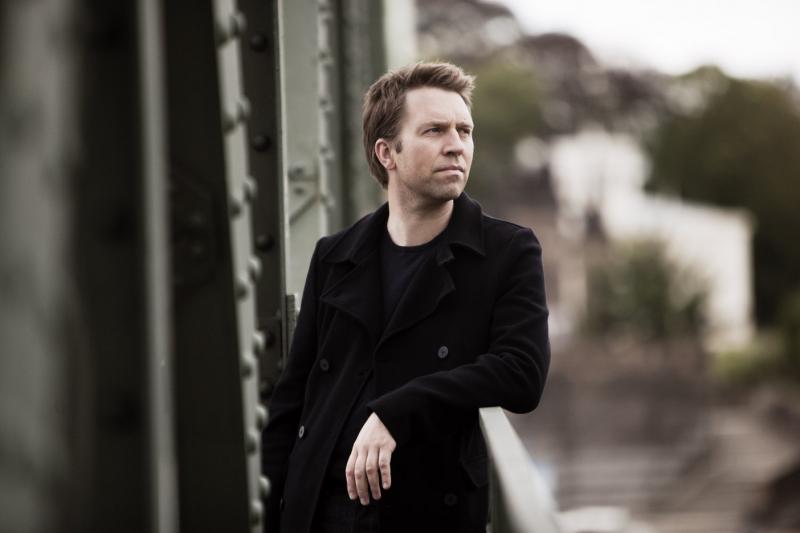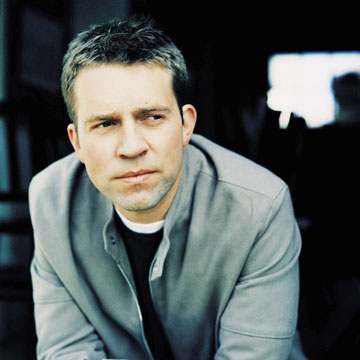Leif Ove Andsnes, Wigmore Hall | reviews, news & interviews
Leif Ove Andsnes, Wigmore Hall
Leif Ove Andsnes, Wigmore Hall
A characteristically poised performance from the Norwegian pianist

If ever there was such a thing as a safe pair of pianistic hands then they would belong to Norway’s Leif Ove Andsnes. There’s a cool, patrician control to everything he does that speaks to thorough preparation, careful interpretative choices and immaculate technique. Thrill-seekers and risk-takers may want to look elsewhere, but for everyone else Andsnes offers the chance to hear cleanly through to the skeleton of a work.
Currently deep into his Beethoven Journey with the Mahler Chamber Orchestra, Andsnes’s affinity for the composer seems only to have grown. The strangely slight Piano Sonata in F Op 54 – the palate cleanser between the Waldstein and the Appassionata – might have been an unlikely opener but proved a natural fit for the pianist. A decorously poised minuet gives way to a second theme in romping octaves, which can all too easily sound like an exercise if treated with any less than Andsnes’s precision. The passagework continues all the way through to the finale, and this uncomplicated statement of musical skill set us up for the rather more inscrutable Bartok Suite Op 14 which followed.
Andsnes is surely among the purest, most technically rigorous performers of his generation
There’s a charm to this miniature that comes from giving almost nothing emotional away but doing it with so much wit and poise that it’s impossible not to be beguiled. Movements end mid-gesture, huge climaxes resolve into a shrug. If the comedy wasn’t pointed as broadly as it might be by Andsnes, then he compensated in the ferocious rhythms of the perpetuum mobile sections, bringing every possible gleaming inch of salon polish to the intellectual repurposing of Bartok’s folk melodies.
 Playfulness wasn’t especially dominant in Beethoven’s Sonata in A Op 101 either, where the mock-martial solemnity of the second movement can gain so much energy from a blunter treatment. The chords of the opening movement however were balanced and weighted with Andsnes’s trademark care, and the sonata offered him every opportunity to exploit this in the contrapuntal webs of melody that Beethoven creates. He was more comfortable in these discursive sections than the passages of passionate, melodic monologue, and the question of the interval was whether a second half of Liszt and Chopin would prove emotionally too much for a pianist happier to describe feeling than display it.
Playfulness wasn’t especially dominant in Beethoven’s Sonata in A Op 101 either, where the mock-martial solemnity of the second movement can gain so much energy from a blunter treatment. The chords of the opening movement however were balanced and weighted with Andsnes’s trademark care, and the sonata offered him every opportunity to exploit this in the contrapuntal webs of melody that Beethoven creates. He was more comfortable in these discursive sections than the passages of passionate, melodic monologue, and the question of the interval was whether a second half of Liszt and Chopin would prove emotionally too much for a pianist happier to describe feeling than display it.
Liszt’s “Pensées des morts” from the Harmonies poetiques et religeuses is an epic in miniature, roaming over the lower extremes of the piano in an attempt to add weight and drama to a fairly flimsy musical structure. It’s an entertaining enough showpiece, but it says so much about Andsnes’s taste and technique that it verged on the vulgar under his touch, Liszt’s harmonic vampings finding nowhere to hide among the clean, classical lines of his playing. Chopin fared better, with the Nocturne in C minor trickling liquid gold in the right hand, and the Ballade in F minor fretting with beautiful insistence at the frayed edges of its theme.
Andsnes is not without his weaknesses, but I’d take these any day over the over-demonstrative strengths of other pianists. Together perhaps with Christian Tetzlaff (by no coincidence, surely, a frequent collaborator), Andsnes is surely among the purest, most technically rigorous performers of his generation, a musician where so often we find only a pianist.
Explore topics
Share this article
The future of Arts Journalism
You can stop theartsdesk.com closing!
We urgently need financing to survive. Our fundraising drive has thus far raised £49,000 but we need to reach £100,000 or we will be forced to close. Please contribute here: https://gofund.me/c3f6033d
And if you can forward this information to anyone who might assist, we’d be grateful.

Subscribe to theartsdesk.com
Thank you for continuing to read our work on theartsdesk.com. For unlimited access to every article in its entirety, including our archive of more than 15,000 pieces, we're asking for £5 per month or £40 per year. We feel it's a very good deal, and hope you do too.
To take a subscription now simply click here.
And if you're looking for that extra gift for a friend or family member, why not treat them to a theartsdesk.com gift subscription?
more Classical music
 BBC Proms: Jansen, Royal Concertgebouw Orchestra, Mäkelä review - confirming a phenomenon
Second Prom of a great orchestra and chief conductor in waiting never puts a foot wrong
BBC Proms: Jansen, Royal Concertgebouw Orchestra, Mäkelä review - confirming a phenomenon
Second Prom of a great orchestra and chief conductor in waiting never puts a foot wrong
 BBC Proms: Royal Concertgebouw Orchestra, Mäkelä review - defiantly introverted Mahler 5 gives food for thought
Chief Conductor in Waiting has supple, nuanced chemistry with a great orchestra
BBC Proms: Royal Concertgebouw Orchestra, Mäkelä review - defiantly introverted Mahler 5 gives food for thought
Chief Conductor in Waiting has supple, nuanced chemistry with a great orchestra
 Dunedin Consort, Butt / D’Angelo, Muñoz, Edinburgh International Festival 2025 review - tedious Handel, directionless song recital
Ho-hum 'comic' cantata, and a song recital needing more than a beautiful voice
Dunedin Consort, Butt / D’Angelo, Muñoz, Edinburgh International Festival 2025 review - tedious Handel, directionless song recital
Ho-hum 'comic' cantata, and a song recital needing more than a beautiful voice
 Classical CDs: Dungeons, microtones and psychic distress
This year's big anniversary celebrated with a pair of boxes, plus clarinets, pianos and sacred music
Classical CDs: Dungeons, microtones and psychic distress
This year's big anniversary celebrated with a pair of boxes, plus clarinets, pianos and sacred music
 BBC Proms: Liu, Philharmonia, Rouvali review - fine-tuned Tchaikovsky epic
Sounds perfectly finessed in a colourful cornucopia
BBC Proms: Liu, Philharmonia, Rouvali review - fine-tuned Tchaikovsky epic
Sounds perfectly finessed in a colourful cornucopia
 BBC Proms: Suor Angelica, LSO, Pappano review - earthly passion, heavenly grief
A Sister to remember blesses Puccini's convent tragedy
BBC Proms: Suor Angelica, LSO, Pappano review - earthly passion, heavenly grief
A Sister to remember blesses Puccini's convent tragedy
 BBC Proms: A Mass of Life, BBCSO, Elder review - a subtle guide to Delius's Nietzschean masterpiece
Mark Elder held back from blasting the audience with a wall of sound
BBC Proms: A Mass of Life, BBCSO, Elder review - a subtle guide to Delius's Nietzschean masterpiece
Mark Elder held back from blasting the audience with a wall of sound
 BBC Proms: Le Concert Spirituel, Niquet review - super-sized polyphonic rarities
Monumental works don't quite make for monumental sounds in the Royal Albert Hall
BBC Proms: Le Concert Spirituel, Niquet review - super-sized polyphonic rarities
Monumental works don't quite make for monumental sounds in the Royal Albert Hall
 Frang, Romaniw, Liverman, LSO, Pappano, Edinburgh International Festival 2025 review - sunlight, salt spray, Sea Symphony
Full force of the midday sea in the Usher Hall, thanks to the best captain at the helm
Frang, Romaniw, Liverman, LSO, Pappano, Edinburgh International Festival 2025 review - sunlight, salt spray, Sea Symphony
Full force of the midday sea in the Usher Hall, thanks to the best captain at the helm
 Elschenbroich, Grynyuk / Fibonacci Quartet, Edinburgh International Festival 2025 review - mahogany Brahms and explosive Janáček
String partnerships demonstrate brilliant listening as well as first rate playing
Elschenbroich, Grynyuk / Fibonacci Quartet, Edinburgh International Festival 2025 review - mahogany Brahms and explosive Janáček
String partnerships demonstrate brilliant listening as well as first rate playing
 BBC Proms: Akhmetshina, LPO, Gardner review - liquid luxuries
First-class service on an ocean-going programme
BBC Proms: Akhmetshina, LPO, Gardner review - liquid luxuries
First-class service on an ocean-going programme

Add comment